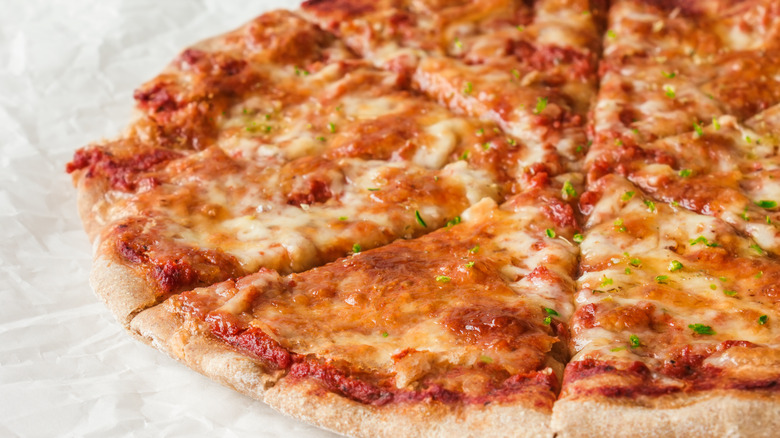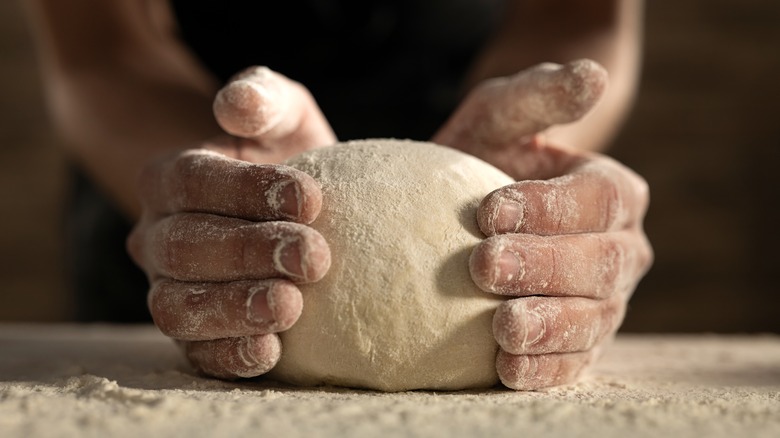J. Kenji López-Alt's Tip For Crispier Thin-Crust Pizza
Forgo the frozen pizza, and get to kneading. Making your own pizza dough from scratch doesn't have to be complicated, so long as you abide by the rules and ratios of your chosen crust style. New York-style pizza crust, for example, is thinner and more common across America than, say, Sicily's spongier sfincione.
As such, thin-crust pizza crusts require their own specific rules. There's nothing quite like an ultra-crispy dough that lets your ingredients shine. Chicago, in particular, has perfected a crispy and delicious iteration of thin-crust pizza. Chicago thin-crust pizza is exactly what it sounds like and is most often cut into squares rather than slices. It's a style antithetical in nature to the city's other trademark pizza: deep-dish.
Given the variance between pizza styles, there's no one-size-fits-all ratio for ingredients. With an ultra-thin dough, Chicago's thin-crust pizza can be challenging to perfect. Luckily, chef and food writer J. Kenji López-Alt has a few recommendations for nailing your next thin and crispy crust. His pizza tips and tricks are all about hydration — and finessing the proper combination of liquids.
Reduce your water and swap some of it for oil
To perfect thin and crispy pizza dough, it's not enough to merely have the right ingredients; rather, it's a matter of knowing how much of each to use — and to what end. In general, pizza doughs typically call for some combination of flour, salt, yeast, water, and oil, as well as the occasional addition of sugar or other standard ingredients. Within those baseline ingredients, the amount of each ultimately influences the resulting crust style.
Standard Neapolitan dough typically uses 60% hydration. However, for Chicago-style thin-crust, López-Alt recommends limiting the liquid content to the extreme. After experimenting with various dough ratios, López-Alt found that a drier dough — specifically, a crust that amounted to roughly 50% in hydration — resulted in the ideal crisp and thin texture (via The New York Times).
In addition to minimizing the overall liquid, López-Alt suggests swapping a fraction of your crust's water for oil. Replacing 10 to 15% of your crust's water with oil will help keep the dough from turning tough. With this simple water change, you can make a smooth and soft crust that ultimately translates to a perfectly thin and crispy pizza.

